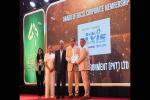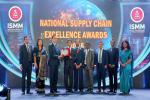Plastic pollution in oceans and other bodies of water continues to grow sharply and could more than double by 2030, according to an assessment by the UN Environment Programme (UNEP).
Plastic debris is currently the most abundant type of litter in the ocean, making up 80 per cent of all marine debris found from surface waters to deep-sea sediments.
According to the International Union for Conservation of Nature (IUCN) at least 14 million tons of plastic end up in the ocean every year.
Plastic is found on the shorelines of every continent, with especially high levels of plastic waste found near popular tourist destinations and densely populated areas.
Flexible design to match capacity
The ship is being designed to be more than 150 metres in length, the exact size to be clarified at the design stage, depending on optimal storage capacity.
The plan is for the ship to travel at four knots with the waste plastic collected by two smaller vessels towing a two-mile net that funnels the waste from the surface and up to ten metres below it.
The most novel feature of the vessel will be the open bow design that allows the collected plastic waste to be fed onto conveyors and into the storage hold.
This waste will be converted into hydrogen by the same thermolysis process that the H2-Industries’ plants will be using on shore.
For every 600 kg of waste collected, approximately 100 kg of hydrogen can be produced and, then, stored in liquid organic hydrogen carrier, a fluid generally referred to as “LOHC,” which is a special liquid that can carry hydrogen, in 20-foot containers.
These containers will be transferred to smaller vessels by onboard cranes for delivery to shore.
Because of the benefit of removing harmful plastic waste from the ocean, hydrogen produced in this manner can be classified as “beyond green,” or “greener than green” as it has been dubbed, recently.
LOHC carrier fluids bind hydrogen chemically and, within H2-Industries’ process, the stored hydrogen is neither volatile nor capable of self-discharging.
The LOHC can be hydrogen-charged and discharged only in combination with a certain catalyst, infusing and releasing hydrogen, as often as needed making it remarkably cost-effective.
H2-Industries storage solutions work by charging (hydrogenation) and discharging (dehydrogenation) the LOHC.
The charging and discharging are independent processes using proprietary catalyst technology.
Creating a maritime hydrogen infrastructure
The ship will be designed to run on electric motors using the LOHC produced, on board, as its fuel and creating electricity using H2-Industries’ 19 inch eRelease racks.
Each rack will hold 48 KW of installed power and there will be multiple racks to deliver the approximately two MW that a ship of this size will require.
This is the same technology H2-Industries has developed and which it intends to deploy in cruise liners, super-tankers, and large container ships.
H2-Industries has received preliminary approval to build its first LOHC hub in East Port Said in Egypt and is currently in discussions with more than 20 countries and, as well, with several ports worldwide.
Michael Stusch, CEO of H2-Industries says:
“It is becoming increasingly clear that the shipping industry can make a positive impact on reducing global emissions.
At H2-Industries, the plan is to help decarbonise industry and power generation, while cleaning up our water resources and converting pollutants into an energy source.
To achieve this, we are looking for investors.
Once the investment is in place, we expect each ship will be built within roughly 24 months.”
One constraining factor for production is the volume of plastic feedstock.
One rotary kiln can handle 600 kgs of waste every hour and that will generate approximately.
100 kgs of hydrogen. Each ship will be designed to be fitted with multiple kilns to match the speed of plastic collection.
It is envisaged that each ship will collect plastic for around a year in one location before moving on to another water waste site.
To ensure no marine wildlife is endangered during the waste collection process, the vessel will employ industry tested technology developed for the seawater intake for desalination plants designed to protect wildlife and habitats.
About H2-Industries
H2-Industries Inc. is a global hydrogen generation and energy storage solutions company headquartered in New York City, USA.
Founded by Dipl.-Ing. Michael Stusch in 2010, the business focused on developing technologies that generate, store, transport and release green hydrogen using Liquid Organic Hydrogen Carriers (LOHC).
The hydrogen can then be economically extracted and used to help create electrical energy.
At present, H2-Industries Inc. is engaged in commercialization activities in twenty countries on five continents, collaborating with leading suppliers and consultants worldwide to facilitate the deployment of its suite of technologies.
To learn more about how H2-Industries is changing the renewable energy supply landscape, visit https://h2-industries.com/en.
About TECHNOLOG Services
With around 20 employees, TECHNOLOG services GmbH is active both in maritime consulting and in ship design.
The service portfolio covers the areas of shipbuilding, mechanical engineering, electrical engineering, facility, equipment and project management.
Other core competencies of TECHNOLOG services GmbH include checking drawings and construction supervision as well as the integration of external expertise for customer- and needs-oriented objectives.






















